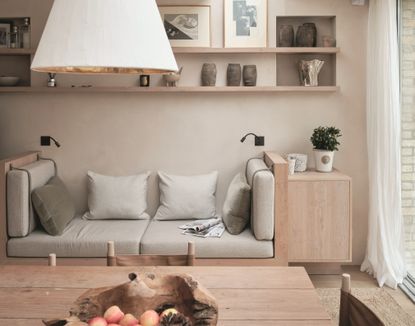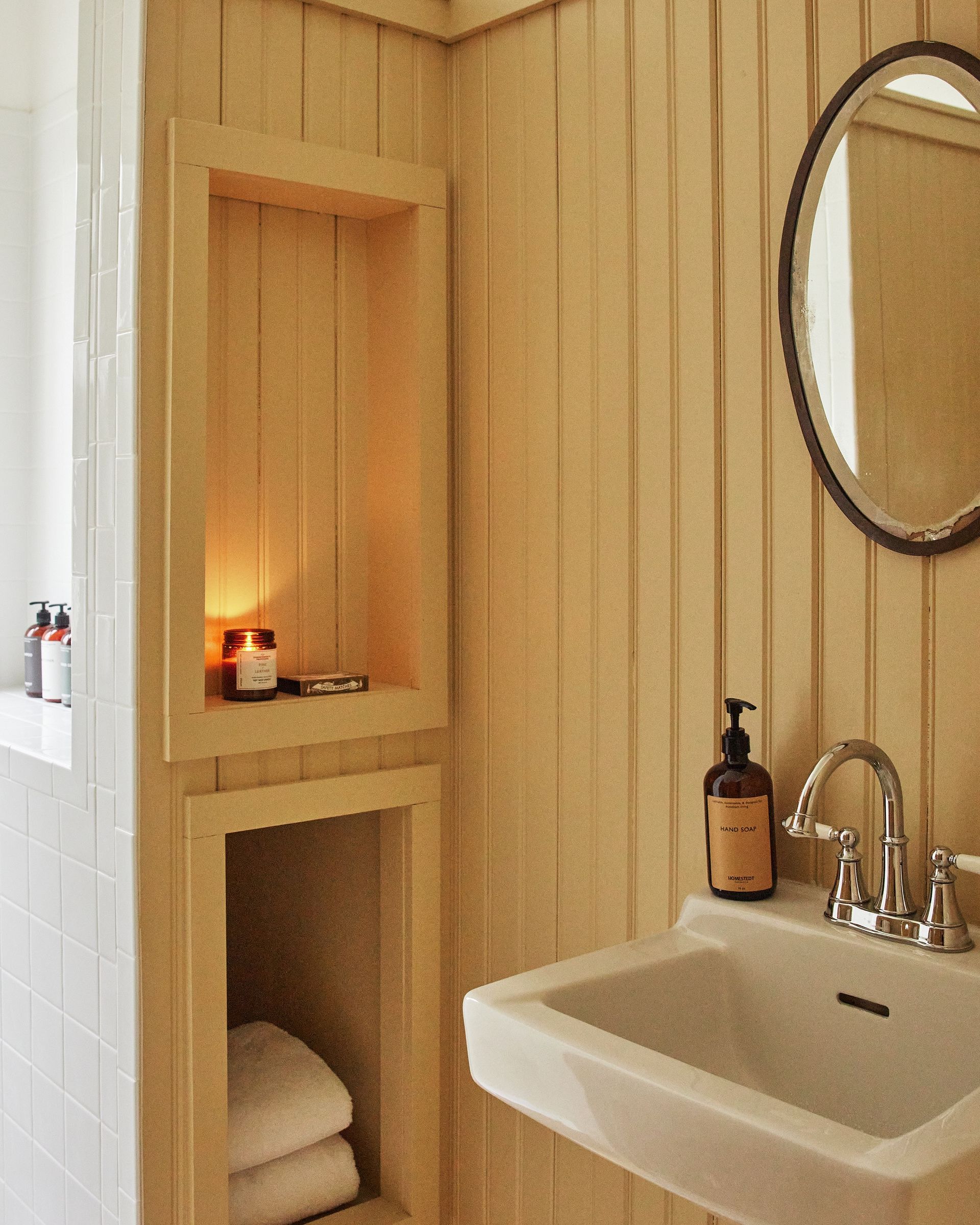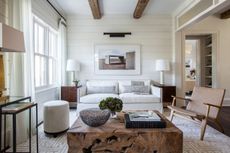So *this* is the secret thing professionals do when painting walls a pale color! An easy trick that changes everything
A tinted primer could be exactly what you need to master a professional-worthy paint job


Priming your walls can be a tedious step in your painting project, but if you're making a drastic color change it's an essential part of the process. After agonizing over which color to use on your walls, you might just happily grab the most bog-standard primer you can find, but experts say a tinted one could be the best choice for certain jobs.
With most fresh paint ideas you don't even need to use a primer at all. They're only used if you're introducing a lighter shade, switching up the paint finish, or decorating a brand-new surface. Tinted primers are only used in the first and last of these instances, so there's no need to fret over whether or not you should be using one if you're just going from gloss to matt (but it's good information to brush up on, either way).
It's likely that tinted primers have been total alien territory until now, so, what are they, and when should you them? To find out, we spoke with an experienced painter and decorator who reveals all you need to know about these tinged primers, including why you'll almost certainly want to use one if you're using a lighter palette.
What is tinted primer?

If you're wondering why your paint color looks different on your walls, a lack of tinted primer could be the answer. As the name suggests, a tinted primer is one that's tinged a different shade than the typical white. Besides serving as an adhesion agent, they're specially developed to offer better masking effects so that lighter colors will take to your walls better.
To understand tinted primers better, a background on regular primers is in order. 'If you’re looking to cover a dark paint color with a lighter color, primer helps mask the old color so the new color appears closer to its true hue,' explains David Sutter, President of Five Star Painting, a Neighborly company. 'Primer can also help new paint adhere to a surface better since certain paints don’t bond well to all surfaces, and it also helps fill in holes and cracks on porous materials (like wood or concrete).'
The purpose of a tinted primer is to create the ideal balance of light absorption as a basecoat to achieve a true topcoat color in fewer coats. As David notes: 'The main advantage of tinted primer is it will mean using fewer coats if you are going from a darker shade to a lighter one.'
When should you use tinted primer?

So, in what instances should you be using a tinted primer? It will all depend on what color you already have on your walls and the new color your plan to paint with. When it comes to how to paint a wall, priming is one of the very first steps, so make sure you've already decided on your fresh color first.
According to David, tinted primer should be when making bold color changes, or when painting brand-new drywall. 'Although primer may seem like an added expense to your paint project, in the end, it saves you money because primer is much cheaper than paint,' he says. 'New drywall, for example, soaks up paint like a sponge. What might take three or four coats of paint can be accomplished with one coat of primer and maybe two coats of paint.'
If you're switching up your shade, a tinted primer will typically only be necessary if you're going from dark to light. For example, if you're going from rich hues, dark greys, or browns to pale pastels or lighter neutrals, a tinted primer will cut out a lot of the work.
How do you choose the right tinted primer for your project?

Tinted primers aren't all the same, and they certainly won't be if you buy them from different brands. If we're talking technicalities you could brush up on your color theory, but put simply, choosing the best one will depend on what existing color you have and which new shade you've chosen.
'Before you put a brush to any surface, you’ll want to look at a few different primers to determine which one fits your needs,' says David. 'Another thing to consider is the base of the paint you are using. If you plan to use an oil-based paint (like an enamel paint), you’ll want to make sure your primer is also oil-based.'
The same can be said of water-based paint and primer, however water-based paint can also be used over oil-based primers so there's a bit more versatility. If the paint brand you're using sells a tinted primer, you probably want to consider using that one since it'll be formulated with that type of paint in mind. If in doubt, always consult a professional first.

Price: $42.06
Size: 1 Gallon
Be The First To Know
The Livingetc newsletter is your shortcut to the now and the next in home design. Subscribe today to receive a stunning free 200-page book of the best homes from around the world.

Lilith Hudson is the News Editor at Livingetc, and an expert at decoding trends and reporting on them as they happen. Writing news, features, and explainers for our digital platform, she's the go-to person for all the latest micro-trends, interior hacks, and color inspiration you need in your home. Lilith discovered a love for lifestyle journalism during her BA in English and Philosophy at the University of Nottingham where she spent more time writing for her student magazine than she did studying. After graduating, she decided to take things a step further and now holds an MA in Magazine Journalism from City, University of London, with previous experience at the Saturday Times Magazine, Evening Standard, DJ Mag, and The Simple Things Magazine. At weekends you'll find her renovating a tiny one-up, one-down annex next to her Dad's holiday cottage in the Derbyshire dales where she applies all the latest design ideas she's picked up through the week.
-
 The Nespresso VertuoPlus is 30% Off for President's Day, and it's Kim Kardashian's Coffee Maker of Choice
The Nespresso VertuoPlus is 30% Off for President's Day, and it's Kim Kardashian's Coffee Maker of ChoiceThis sleek and stylish coffee maker was spotted in Kim's home bar, and you can currently save $60 if you buy yours from Amazon
By Lilith Hudson Published
-
 10 Rules For Decorating Small Spaces - How Designers Create A Cozy Room That Also Boosts The Square Footage
10 Rules For Decorating Small Spaces - How Designers Create A Cozy Room That Also Boosts The Square FootageExperts reveal their tips and tricks on how to combine a welcoming vibe with space-stretching interior design techniques...
By Ruth Doherty Published

